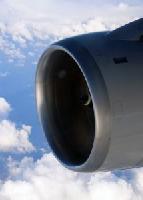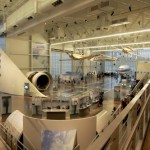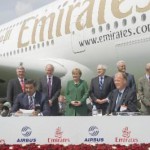Boeing [NYSE:BA] forecasts a $2.8 trillion market for new commercial airplanes over the next 20 years. Strong demand for new airplanes will lead to a world fleet with significantly improved environmental performance.
These new airplanes will accommodate a forecasted 5 percent annual increase in passenger traffic, and a 6.1 percent annual increase in air cargo traffic.
The Boeing Company released its 2007 Current Market Outlook today in London. The report, at http://www.boeing.com/commercial/cmo/, is Boeing’s world view of air travel over the next 20 years.
„Air travel is going to continue to grow, driven by economic growth, world trade, liberalization, and by the availability of new, more capable and more efficient airplanes,“ said Boeing Commercial Airplanes Vice President, Marketing, Randy Tinseth. „This growth will occur in an environmentally responsible and accountable manner that addresses greenhouse gas reduction efforts with progressive new aircraft and increased operational efficiencies in the air transportation system.“
The Boeing outlook calls for a market of 28,600 new commercial airplanes (passenger and freighter) by 2026, with a much more balanced demand in aircraft by region over the forecast period.
On a delivery-dollar basis, the largest market is projected to be the Asia-Pacific region, with 36 percent of the $2.8 trillion total. North America will make up 26 percent of the delivery dollars, and Europe, Russia, and the CIS (Commonwealth of Independent States) will make up a total of 25 percent. Deliveries to airlines in Latin America, the Middle East, and Africa will represent the remaining 13 percent of the delivery dollars between 2007 and 2026.
Over the next 20 years, passenger and cargo airlines will take delivery of approximately:
- 3,700 regional jets – below 90 seats
- 17,650 single-aisle airplanes – 90-240 seats, dual-class
- 6,290 twin-aisle airplanes – 200-400 seats, tri-class
- 960 airplanes 747-size or larger – more than 400 seats, tri-class
Combined with the retained fleet, these new deliveries will result in a world commercial airplanes fleet of more than 36,400 airplanes by 2026. „The single-aisle segment will continue to have the greatest demand in terms of units,“ Tinseth said. „This is partially driven by continued high growth in low-cost carriers.“
In terms of value, the twin-aisle category is projected to be the largest. Airplanes such as the 787 and 777 will enable airlines to grow by providing more flights to more destinations – the way passengers want to fly. Airplanes 747-size and larger will continue to operate in Asia-related markets as well as across the North Atlantic.
Boeing projects strong demand for new large freighters due to their fuel efficiency, higher reliability and utilization, and long-range capabilities.
The Current Market Outlook forecasts that commercial airplanes in the 90 to 400-seat categories will account for almost all of the growth in air travel over the next 20 years. Airlines will continue to accommodate that growth by adding frequencies and nonstop flights – not by flying larger and larger aircraft.
As a result, Boeing is focused on offering new airplanes that burn less fuel and spend less time in maintenance, allowing airlines to maximize operating efficiencies, lower their costs, and increase profitability – while providing the nonstop, point-to-point flights and frequency choices passengers want.






